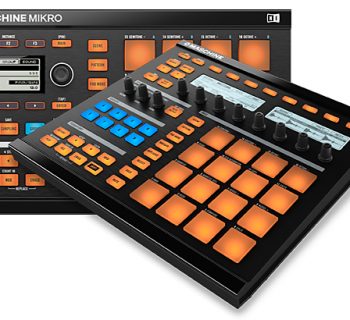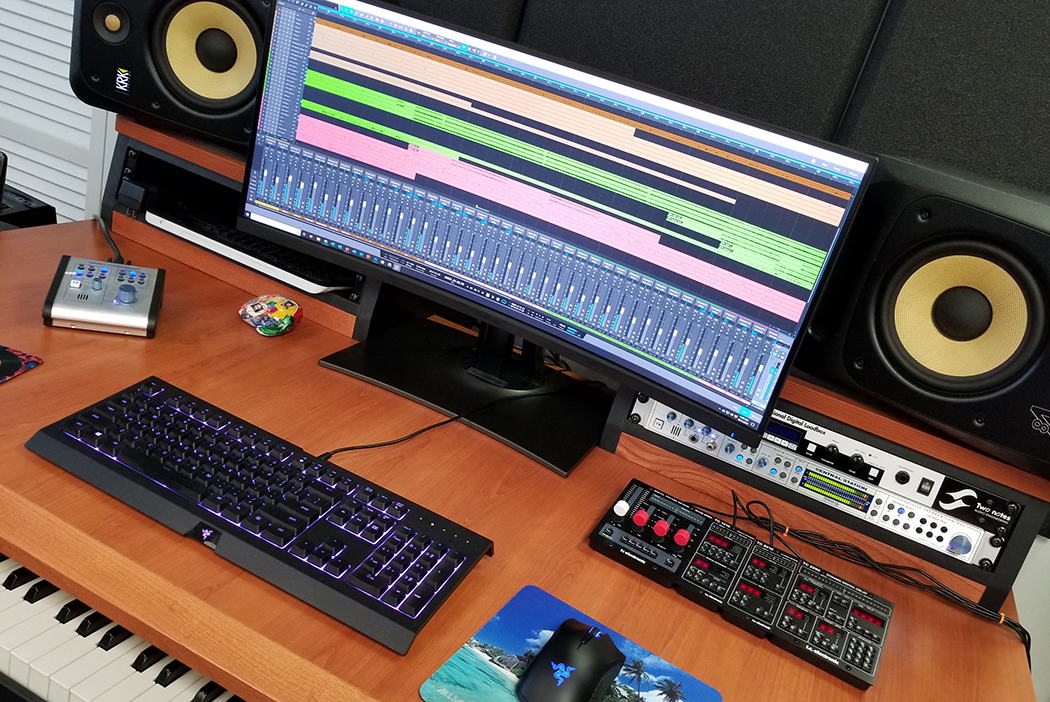| Category | Value | Rating | |
| Features | 30% | ||
| Usability | n/a | ||
| Sound | 50% | The Black Sea |
Luminous |
| Documentation & Support | n/a | ||
| Price | 20% | The Black Sea |
Luminous |
|
|
|||
| OVERALL RATINGS = 3.2 The Black Sea - 3.3 Luminous 3.6 stars or better: Outstanding, WIHO Award 3 stars or better: Worth considering 2 stars or better: Suited to specific needs 1 star or less: Not recommended |
|||
Players who obsess over cymbals have undoubtedly come across the name Murat Diril. This Turkish craftsman started out making cymbals for Istanbul Cymbals, moved on to Meinl (where he helped to develop the Byzance and MB20 lines), and then moved over to Paiste, where he led the development of the 20 Series. With a passion for B20 bronze material, it was inevitable that Murat would eventually launch his own line of hand-hammered cymbals. Although European drummers have been enjoying his handiwork for a few years, 2010 sees the first introduction of his cymbals to the US market, and from what we’ve seen, we expect him to make quite a, um… splash over here.
Like anything in life that challenges the status quo and consequently takes chances, there are risks that accompany such an endeavor. Murat Diril’s two lines of cymbals, The Black Sea and Luminous, do just that with both an incredible look and sound that deserves all of our attention. Both product lines possess dark qualities and a strong initial attack that, coupled with their heavy weight, provide a very worthy, durable alternative for drummers who are looking to expand the variety of their cymbal pallet. You should definitely check these out.
Features
Both the Luminous and Black Sea cymbal lines are completely handcrafted in Turkey. Upon our first gaze of these simply gorgeous musical instruments, it was almost impossible to question that fact. The Black Sea cymbals have a striking untreated, natural finish coupled with relatively small, though consistent hammer marks. However, the finish of this line is almost done an injustice when simply described as hand-hammered, as its appearance almost resembles that of grainy mineral rock.
With the exception of the bell, the entire cymbal is fashioned in this way. The bell’s equally striking appearance, which essentially is nothing more than the cymbal’s natural finish (though lighter in pigmentation), provides great visual contrast. With the border of the bell being created by the cut off point of the cymbal’s hammering, it has a very raw look. The choice of white for the cymbals’ logo, another example of contrast, demonstrates the meticulous detail that went into the product’s look.
 The Luminous line also has a striking appearance that could be described as what a Zildjian K Con would look like if it had a brilliant finish. Thus, although the hand hammering is still easily visible, the cymbal is presented in such a way that the hammering is not as aggressive a feature as it is on the Black Sea line, and it is more integrated into what is essentially a smoother finish.
The Luminous line also has a striking appearance that could be described as what a Zildjian K Con would look like if it had a brilliant finish. Thus, although the hand hammering is still easily visible, the cymbal is presented in such a way that the hammering is not as aggressive a feature as it is on the Black Sea line, and it is more integrated into what is essentially a smoother finish.
Given Murat’s pedigree, it’s no wonder that the Black Sea line somewhat resembles Meinl’s Byzance Extra Dry and MB20 lines, as well as Paiste’s fantastic 20 Series.
The Black Sea series includes:
- Rides: 20”, 21”, 22”
- Crashes: 16”, 17”, 18”
- Hi-hats: 13”, 14”, 15”
- Splashes: 10”, 12”
- Chinas: 16” 18”
The Luminous series includes:
- Rides: 20” Ride and Flat Ride, 21” Ride, 22” Ride and Flat Ride
- Crashes: 16”, 18”, 19”
- Hi-hats: 13”, 14”, 15”
- Chinas: 18”
Sound
We received a pair of 14” hi-hats, 16” and 18” crashes, 20” ride and 18” China from the Black Sea series and 14” hi-hats, 16” and 18” crashes as well as a 20” ride from the Luminous series for review.
The sonic qualities of both these cymbal lines match the uniqueness of their physical features. In thinking of different adjectives that would accurately describe these bad boys, we kept coming across phrases like jazzy, dark, trashy, gongy, and quick, with limited overtones. What is even more interesting are the unique qualities that each individual cymbal has based on its size and density.
Murat Diril’s site describes the 20” Black Sea ride as a tonally smooth and dark cymbal with very short sustain, low end and a trashy sound. In fact, the cymbal reminded us in many ways of the Zildjian K Custom 21” Special Dry Ride, which is most commonly used by artists such as Steve Smith as a jazz ride. Therefore, we felt that right off the bat, such a cymbal could definitely be used for styles of music such as rock (because of its thickness, which is not always the case with jazz rides that are typically thinner) and jazz.
Though the bell definitely has a presence while played with the shoulder of the stick, its presence is not filled with obnoxious overtones and is rather deep. When hit with the bead of the stick, the bow produced a clear ping with good stick definition. Between the ride’s two main striking surfaces, the cymbal is very articulate at a wide variety of dynamic levels. For someone who does not want a ride that washes out as you play with a heavier feel, this would be your baby.
On the other hand, the Luminous 20” ride tells a completely different story. The brighter and much lighter 20” Luminous ride has a wonderfully powerful wash which in many ways makes the cymbal seem more like a large crash than it does a ride. We found this to be very interesting considering the generally heavy weight of all of the cymbals that we received for review.
Usually, the jump in weight and give between larger crashes (18” and 19”) and their coupled rides is rather significant, and while there is a noticeable difference in the focused attack of the 20”, the general rule does not apply here. This is not necessarily a bad thing, but just a characteristic whose appeal depends on the player. If you want to crash ride this bad boy or just use it as a big crash for that “wall of white noise” that can cradle a band (very common in today’s modern/alternative rock sound), you can do it with this cymbal. Though not a cymbal that would be very articulate with bead playing in an amplified band, the bell is very articulate while staying dark in nature and would give an interesting rock bell sound. It should also be noted that at softer dynamic levels (medium to soft playing), the cymbal’s bow is quite articulate.
In order to experience the full sound spectrum of each crash received, we decided to use different implements including sticks, mallets, Vic Firth Tala Wands, and brushes. With the Black Sea 16” crash, a basic shoulder stroke with a stick provides a strong initial attack but does not sustain very much, or have much wash. This creates a nice separation of notes when ride/crashing.
A basic bead stoke on the bow gives good stick definition while a shoulder stoke on the bell gives a response very low in pitch. When played with the Tala Wands, there is lots of articulation, which we feel comes from the low relative pitch and thickness of the cymbal. This would be good for acoustic shows because even intricately played rhythms did not get lost in the wash of the cymbal and instead we heard this nice attack coupled by what could be called a “trashy” ambiance.
With brush sweeps, the cymbal’s hand hammered texture is heard and when struck with the brush, we got a dark, dry sound that, again, was really jazzy in nature. Finally, a mallet roll provided a chesty, unobtrusive China sound, almost gong-like. As a matter of fact, as cheesy as it might seem, we almost could hear the waves crashing against the beach shore, similar to listening to the opening of an empty sea shell.
When playing the Luminous crash of the same size, which was a little heavier in weight than a standard cymbal, the initial attack was noticeably lower in pitch than many other cymbals its size across many other brands. It has been our experience that many 16” crashes with a brilliant finish sound too bright. However, the Luminous crash has a certain reserved, deep presence comparable to that of an 18” crash.
Like the Black Sea crash, the initial attack is strong but the decay is definitely more gradual — a little bit more traditional sounding. When hit with the bead of the stick on its bow there is a lot of stick definition. A more interesting feature of this cymbal is its bell, which lacks both considerable physical and audible presence, most likely the reason behind its deeper, richer tone. Cymbal chokes sound really fantastic as a result of the combination of bright attack with quick decay. It, too, like the other 16”, has a beautiful roll build up with an added shimmering quality.
Both 18” crashes from each line mostly retain the distinct qualities of their smaller siblings while simultaneously leaning more towards a more traditional sound. This results from the increased spread and glassier quality in both of them. The Black Sea 18” remains dark but not as trashy as the 16” and thusly has more wash with a slightly slower decay. This makes it more of a multi-purpose cymbal as a result of its schizophrenic ability to be both conventional and distinct. With its pingy playability both on its bell and bow, it could most certainly be used as a jazz ride, but with its thickness, it could also be used as a rock crash. With a mallet role, it has a little bit of added brilliance.
When playing the 18” Luminous crash, we could not help but be reminded of the sonic qualities of the Dave Weckl HHX Evolution cymbals by Sabian because of its similar transient quality. The 18” actually teetered between a ride and a crash more than any of the other cymbals, producing the largest amount of spread and definition in the same instrument. The focused bead attack that we heard on the bow was more like what we would have expected out of a 20” ride.
The stick definition was also coupled by this intoxicating “smokey” quality underneath it. Sensitive playing would really shine both live and in the studio with this puppy. The bell is much more articulate than the bell on the 16”, hence its use as a ride. If that were not enough incentive to make it a ride, the cymbal does not obnoxiously wash out under heavy bow playing when done with the bead of the stick. This one would also be great for acoustic shows since (contrary to many cymbals its size) it would not wash out easily. While sensitive, it does not feel flimsy. The mallet roll on this cymbal is also gorgeous. There is a hint of trashiness that gives it this unique presence even at low playing volumes.
Contrary to what Murat Diril’s website states, the 14” Black Sea’s are some of the heaviest hi-hats we have ever played on. Both top and bottom cymbals really felt like two bottoms. At best, the top cymbal might pass for a medium heavy, but the cymbals are most certainly not of medium weight. This is even further proven by the very close tonal relationship of the two cymbals when played separately. Either way, the added weight surprisingly made the cymbals really comfortable to play with the pedal and produced a very dry and articulate chick sound.
When played closed and tight with a stick on the bow of the hats, we got a great crisp response which could certainly cut through loud amplified music. This did not change as rhythms became more complex. For this reason and the fact that when played open, the hi-hats produced a very chesty, trashy sound, we felt that these would be ideal rock hi-hats.
One thing that we were not too crazy about was a persistent buzzing when the hats were shouldered with the shank of the stick. As with cymbals that have obnoxious overtones, it could be argued that this sound would disappear in the context of life music. However, we feel that this might be an issue in the studio where hats are typically close miked. This sound became especially pronounced when they were shouldered very aggressively and was almost like a rattling chunkiness at that point. Though perhaps not the greatest choice of cymbals for lower volume situations, it would definitely work in high-energy contexts, like drum and bass.
Though similar in weight characteristics, the Luminous 14” hi-hats sounded quite different. While still producing a dry, crisp chick sound when played with both the foot and sticks, they were much more articulate when played closed and tightly in any position and with any technique. These hats would sound really great with virtually any style of music.
The Black Sea 18” China was the most abrasive sounding cymbal we received. It is incredibly high-pitched and very trashy sounding. While most of the cymbals in both of these lines have a quick attack, the China’s attack was significantly faster. In loud situations, this cymbal does nothing short of roar!
Documentation and Product Support
Murat Diril’s website provides audio samples of each of their lines and individual cymbals that to our ears, represented the actual sound of the cymbals very well.
Price
The prices listed here are the manufacturer’s suggested retail prices. However, the cymbals have a street price that appears to range from 30-40% off the MSRP. That said, they are still expensive cymbals, more so than some of the most costly alternatives from a few of Murat’s former employers. But the extra cost gets you completely hand hammered cymbals with a sound that may give you more of a unique signature sound than some of the more commercial alternatives.
|
The Black Sea Series |
MSRP | Luminous Series | MSRP | |
| Rides | Rides | |||
| 22" | $557 | 22” Flat Ride | $658 | |
| 21" | $525 | 22” Ride | $658 | |
| 20" | $497 | 21” Ride | $621 | |
| Crashes | 20” Flat Ride | $588 | ||
| 18” | $375 | 20” Ride | $588 | |
| 17” | $348 | Crashes | ||
| 16” | $315 | 19” | $489 | |
| Hi-Hats | 18” | $450 | ||
| 15" | $558 | 16” | $378 | |
| 14" | $512 | Hi-Hats | ||
| 13" | $465 | 15" | $691 | |
| Splashes | 14" | $633 | ||
| 12” | $223 | 13" | $576 | |
| 10” | $204 | Chinas | ||
| Chinas | 18" | $454 | ||
| 18” | $367 | |||
| 16” | $321 |
Contact Information
Murat Diril
www.muratdiril.com

















